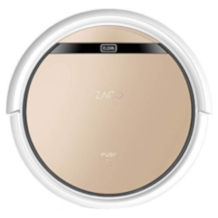Steam cleaner purchasing advice: how to choose the right product
- What You Need to Know
- Steam cleaners allow you to clean certain floor and wall surfaces in living rooms as well as on the patio and in the garden.
- Steam vacuums can be used to freshen up textile surfaces such as carpets or fabric sofas.
- The devices dissolve greasy and oily dirt and remove more than 99 percent of bacteria. And they do so without the use of chemical cleaning agents.
- In this article, we discuss the differences between steam cleaners, steam brooms, steam vacuums, steam ducks and explain how window steam cleaners and combination devices work.
- Depending on the cleaning task, some devices with their individual advantages are better suited than others. Special features or accessories such as special nozzles can also help with cleaning.
Functional principle of a steam cleaner
Steam cleaners are versatile devices that simplify the cleaning of surfaces and furniture in the home and at the same time protect the environment, because the use of chemical cleaning agents is unnecessary. With steam cleaners, you can clean, disinfect or degrease hard floors, carpets or fabric sofas and car seats more thoroughly than would be possible with a hoover or a cleaning cloth.
The principle of operation is that water is heated in a tank by an electric heating element, atomised into steam and emitted under high pressure through a nozzle. The microscopically small steam molecules penetrate into the smallest irregularities of a surface and dissolve greasy, oily and waxy dirt due to their high temperature. In this way, hygienic cleaning is possible without the use of chemical cleaning agents.
Steam at the front of the nozzle can be very hot
Always be careful when using a steam cleaning appliance and read the instructions supplied by the manufacturer carefully Touching the nozzle tip of a switched-on appliance can cause scalding.
Advantages of cleaning with steam
Cleaning with steam has several advantages over conventional manual cleaning methods. First of all, there is the higher cleaning performance: The microscopic, hot steam particles loosen dirt even in textile fibres that are difficult to reach when cleaning by hand. You may be familiar with the highly visible effect of carpets that are treated with a steam cleaner or steam vacuum for the first time after years of use. The whitening and the cleaning power that comes with it is clearly visible.
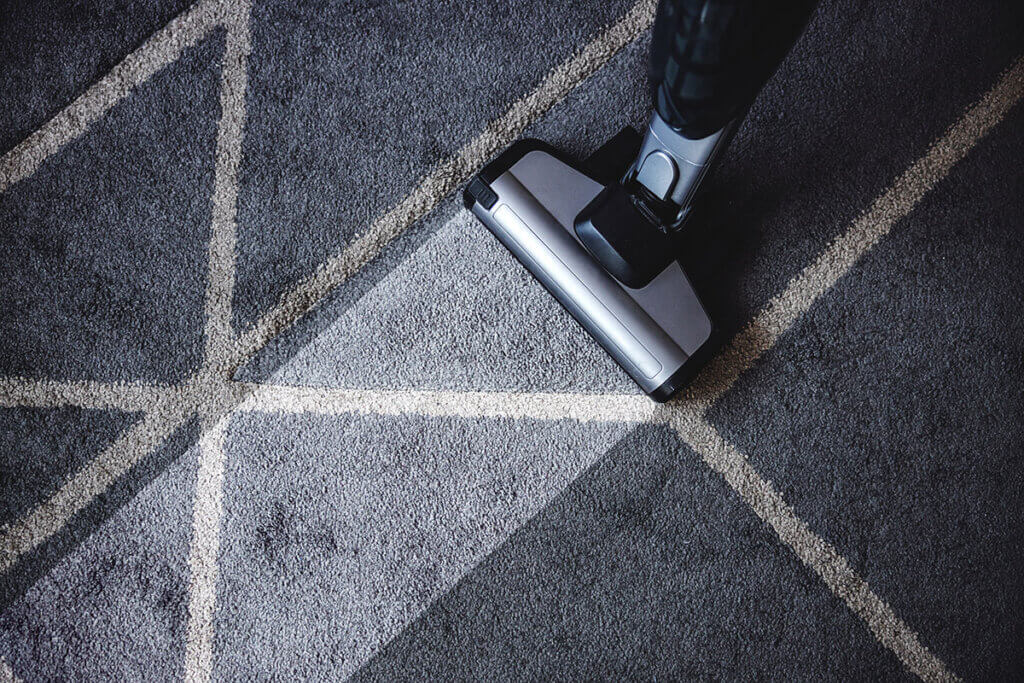
You can do without chemical cleaning agents
One of the biggest advantages of the devices is that, according to the manufacturers Kärcher or Leifheit, they kill 99.99 percent of bacteria without the aid of chemical additives. This is easy on the wallet, as you do not have to budget for cleaning agents. In addition, this cleaning method is good for the environment, as no chemicals end up in the waste water.
Floors in particular are a gathering place for bacteria and dirt. Protect yourself, your family and your housemates. Babies, small children and pets are exposed to these sources of pollution much more frequently than adults. The little ones in particular also benefit from the fact that no toxic cleaning agent residues remain on the surfaces. That’s why steam cleaners are the perfect solution for getting hard floors made of stone, tiles, PVC, laminate or sealed parquet hygienically clean without chemical cleaners.
However, you should absolutely refrain from using them on uncoated parquet: the hot water vapour could swell and damage it. The same applies to cork floors and oiled wooden floors. If you are not sure whether you can use a steam cleaner on your floor, it is advisable to test it on a small, inconspicuous area. This could be an area where the sofa normally sits, for example.
Steam cleaners save time and energy
Using a steam cleaner does not usually require a great deal of time or effort. On many surfaces, a single treatment is all that is needed without having to use force, as with scrubbing. The steam pressure does most of the work for you. Even hard-to-reach places, such as corners or sofa crevices, can be reached effortlessly with the appropriate attachments. So you not only save energy, but also a lot of time due to the lower number of repetitions. Overall, the steam cleaning method is more hygienic than wiping with a mob and a cleaning agent.
Asthmatics and allergy sufferers benefit
Steam cleaners reduce the amount of dust mites, which can be partly responsible for asthma and allergy symptoms. However, steam cleaning does not only ensure cleanliness and hygiene in the household: many of the complaints also occur due to chemicals contained in the cleaning agents. When using a steam cleaner, you can do without such additives and therefore clean in an allergy- and asthma-friendly way while protecting the environment at the same time.
Suitable devices and attachments for every area
No matter what area of the house you want to clean: There is a suitable appliance for every requirement. If you want to steam clean many different areas in the house or many different materials, you should choose a universal model with the appropriate accessories. You can find more information about models and designs in the following chapter.
Different types of steam cleaners and models
In general, all types of steam cleaners are suitable for removing dust and dirt. Various product types are marketed under the label steam cleaner. However, these differ in terms of their specific usage goals and each bring their own advantages and disadvantages. In addition, there are combi devices that can be converted or compressed thanks to their large range of accessories and are thus suitable for almost all conceivable cleaning tasks. For special cleaning tasks, however, it can make sense to look for a specific type of steam cleaner. In the following, we provide an overview of steam cleaners, steam brooms, steam vacuums, steam ducks and combination units.
Steam cleaners: powerful floor cleaners
Classic steam cleaners are similar in design to classic hoovers. You can recognise such a steam cleaner model by the fact that the main part of the device, including the water tank and the steam boiler, is located in a carriage that you pull behind you like a hoover. This carriage is connected to a hose or a pipe at the end of which you can mount various steam nozzles.
There are nozzles for different purposes, for example for hard floor or carpet cleaning. Operation is quite simple: You simply move the tube or hose over the surfaces to be cleaned. If necessary, the operating unit with the carriage simply rolls behind you like a hoover. With many units, you regulate the hot steam manually by pressing the handle on the cleaning unit.
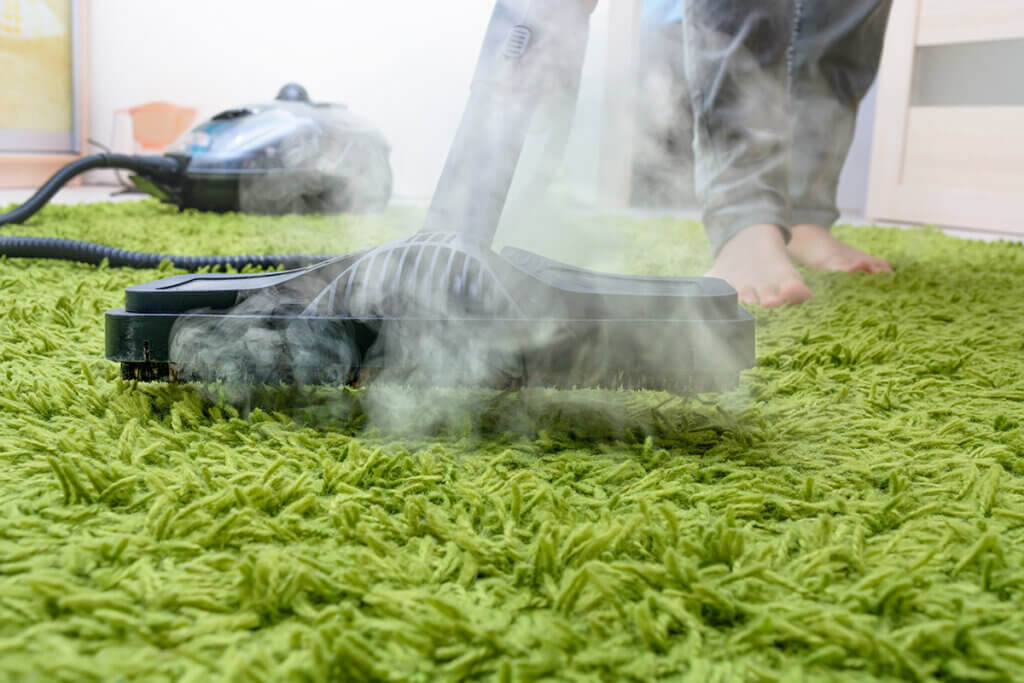
Flexible use even overhead
As with a hoover, you can easily clean corners and niches as well as work overhead thanks to the control unit in the form of a tube or hose.
A characteristic feature of this type of floor cleaner is that you can work on large areas in a short time. The dirt is loosened from the floor by the escaping moisture and picked up by the cloth on the underside. You must clean the cloth after use. The easiest way to do this is in the washing machine. Many of the cleaning cloths can withstand washing temperatures of 60 degrees Celsius or more.
The great advantage of steam cleaners of this type is the very large water tank with a capacity of up to two litres. This allows you to clean large areas without having to refill the tank in between. The disadvantage of this type of cleaner is its dimensions: If you want to store such a device after cleaning, it requires more space than, for example, a steam broom, which combines all components on the handle. In addition, the appliances are quite heavy, weighing up to ten kilograms when full. However, this disadvantage mainly affects transport to the area of use. Once there, you pull the carriage behind you on its wheels, just like a hoover.
Pro points
- Quick cleaning of large areas
- Long working hours without refilling thanks to large water tank
- Manual steam control possible
Drawbacks
- A lot of storage space required
- High weight
Steam brooms: handy floor cleaners
Steam brooms, also called stick steam cleaners, consist of a long stick with a handle. They are electric mops, so to speak. The water tank is located on or in the handle, which is rather small compared to large steam cleaners or steam vacuums with a trailing carriage. This is important to ensure good handling.
These models are predestined to clean floor surfaces such as hard floors or carpets effectively and at the same time with as little effort as possible. They can be guided over the surfaces to be cleaned without any further attachment. Steam brooms with a pointed floor nozzle simplify the cleaning of otherwise hard-to-reach nooks and crannies.
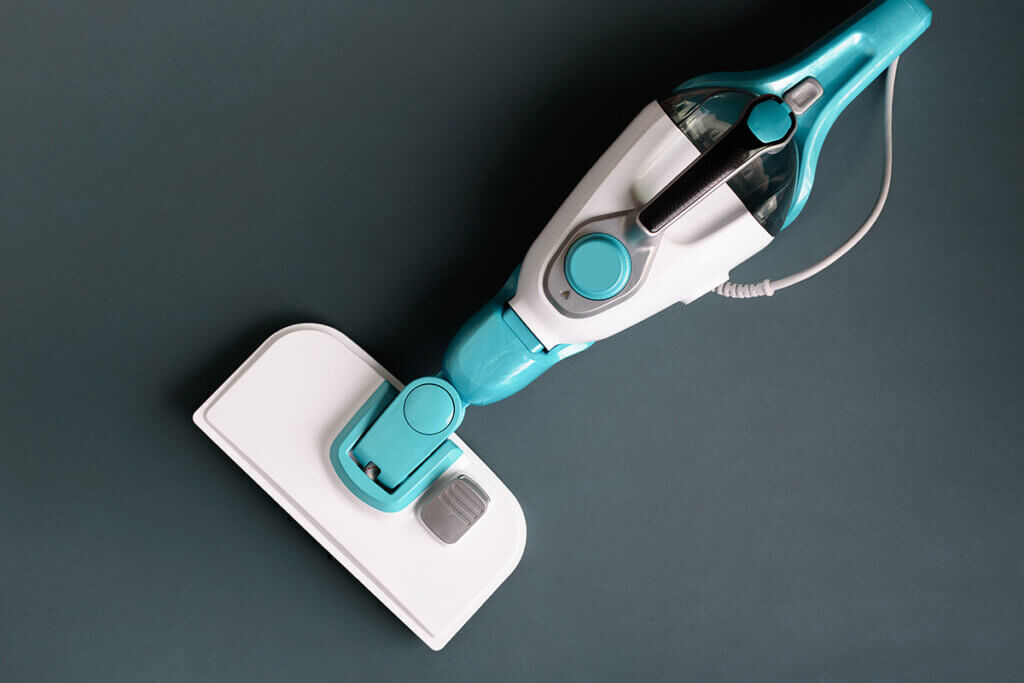
Compared to a traditional mop, the biggest advantage is that you don’t have to continuously dip the mop in clean water, wring it out and then reapply it. This saves work and time. In addition, less force is needed to tackle dirt compared to traditional mopping. The hot steam loosens many soils and build-ups without the need for scrubbing.
Models with detachable handpiece
There are multitool versions that have an additional, detachable hand tool. This increases your radius of action immensely and allows you to clean hard-to-reach areas.
Their dimensions mean that the handle models do not require a lot of storage space. You can store them in a small storage room, in a household appliance cupboard or in an alcove. It becomes even more compact if the handle can be folded or if it is a telescopic model with a retractable handle.
The disadvantage of steam brooms, however, is that their hose is not flexible, which makes cleaning higher places or taps almost impossible. For your own safety, you must not use the devices overhead. There is a risk of scalding yourself when the hot water escapes from the water tank. Therefore, steam cleaners with handles are only suitable for cleaning floors.
Pro points
- Ideal for floor cleaning
- Simple operation
- Low weight
Drawbacks
- Only floor cleaning possible
Steam vacuum cleaner: particularly thorough cleaning
Like steam cleaners, steam vacuums are similar in design to classic hoovers, but they do much more: like a hoover, you pull the carriage with the technology behind you. In addition to the motor, however, there is no hoover bag inside, but a fresh water tank, a heating unit and a dirty water tank.
At the end of the hose or tube, you can release hot water steam automatically or at the touch of a button, which cleans materials deep into the pores. Unlike steam cleaners, the loosened dirt is not absorbed by a floor cloth, but sucked back in by the device. As a result, you can use considerably more water or steam and the surfaces still do not get soaked through the suction function, but almost dry.
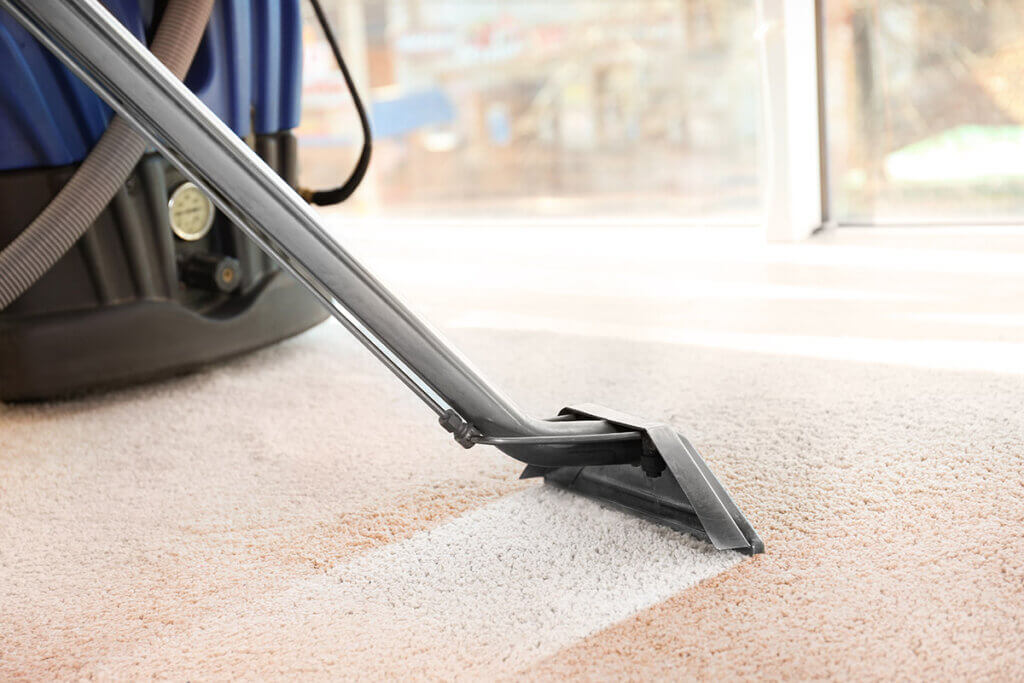
This type of steam cleaner is recommended for the particularly thorough cleaning of larger surfaces. Thanks to the quick drying through of the additional suction function, these can be walked on again relatively shortly afterwards. In addition, sucking in the moisture prevents mould and mildew from forming on textile surfaces. This method is therefore ideal for freshening up old sofas or carpets. You will notice a clear difference. The fact that there are no floor cloths to absorb the dirt, but that they also have to be changed or replaced regularly, saves effort, time and money.
It can be seen as a disadvantage that the devices are just as bulky and at least as heavy as the steam cleaners due to their technology. The additional technology is also reflected in the price: steam cleaners rank at the top of the scale in terms of purchase price.
Pro points
- Suitable for cleaning large areas
- Best cleaning results
- Long working time thanks to large water tank
- No need to clean or replace floor cloths
Drawbacks
- High purchase price
- A lot of storage space required
- High weight
Window steam cleaner
For cleaning windows, many steam vacuum cleaner models have special attachments that enable the loosening of dirt by the hot steam and the subsequent suction of liquid and loosened dirt particles. For moderately dirty windows, this cleaning performance is usually sufficient. However, for heavily soiled windows, pre- and post-processing may be necessary.
Better results with a separate window vacuum cleaner
The easiest way to clean windows is with models called window vacuums. These models, which are specially designed for cleaning windows and are offered by the German companies Kärcher and Leifheit, for example, are a separate type of device and are not steam cleaners. You apply a mixture of water and a cleaning agent using a spray bottle. Now rub it in with the cloth provided.
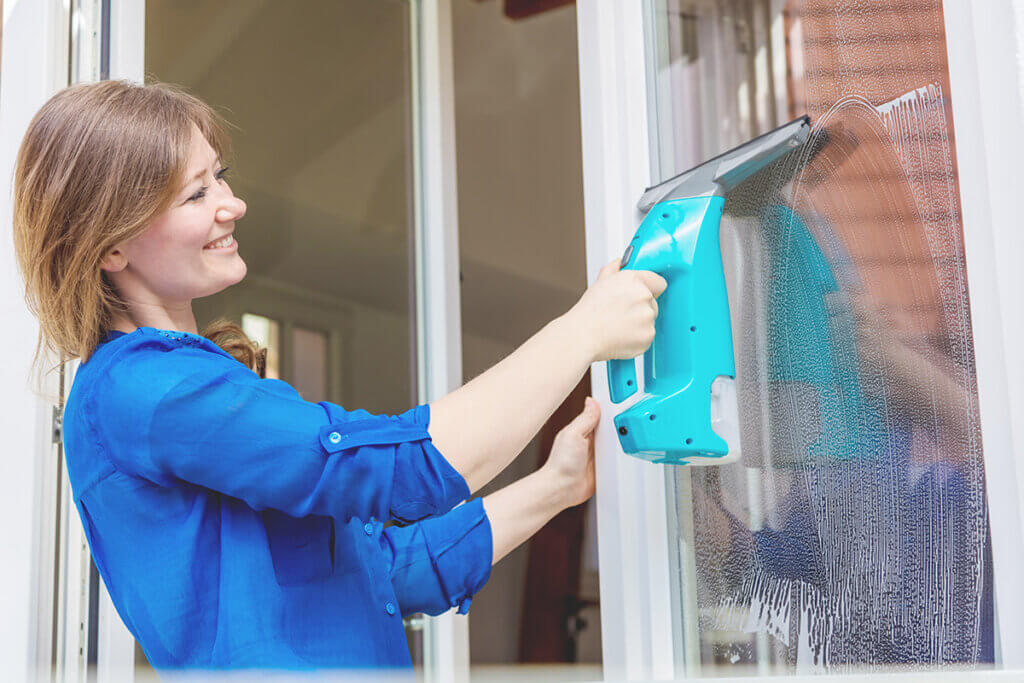
Then use the actual cleaning device and suck the loosened dirt and moisture off the windscreen without any belts or streaks thanks to the rubber lip attached above the vacuum cleaner. It combines the functions of a wet vacuum cleaner and a squeegee, also called a flitsche. By the way, this also works perfectly on mirrors. You can also clean other surfaces such as tiles in the shower or sealed wooden surfaces with a window vacuum. However, according to Stiftung Warentest, the cleaning result is somewhat worse with some models than with glass surfaces.
Hand-held steam cleaners: Particularly small & convenient
Special variants of the devices, which are designed to be small and compact and can therefore be conveniently operated with one hand, are called hand-held steam cleaners. Due to their design, especially the pointed steam nozzle at the front, they are also called steam ducks.
These variants are ideal for cleaning small, hard-to-reach and angled areas. Users can remove dirt from joints and grooves, fittings and household appliances in this way.
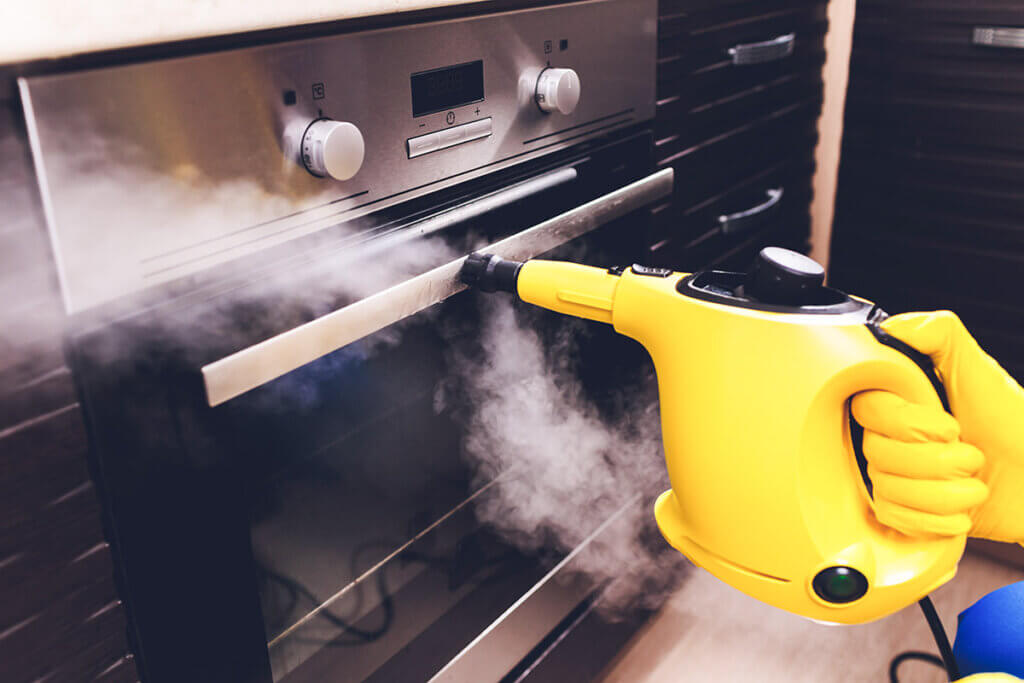
Suitable accessories expand the possibilities
With the appropriate attachments and adapters, you can also include windows, textiles and textile furniture in the cleaning process.
The compact design means that only a small water boiler is built in, which can produce a correspondingly small amount of steam. In addition, the steam ducks are thus quickly ready for use. This is a great advantage and quite sufficient for the treatment of small or medium-sized areas. Due to their low weight, the devices are also suitable for small cleaning jobs around the home, in the garage or in the car.
But where there is light, there is also shadow: A disadvantageous feature that the small ones bring along is their lower power. They are less powerful than large appliances, and the smaller water tank limits the application time to 10 to 20 minutes before you have to fill in new water and wait for it to heat up.
Hand-held steam cleaners rarely have a hose or pipe with which to work the floor surfaces. You would have to do the cleaning in small sections in a bent or kneeling position, which could lead to back problems. In addition, this variant would take much longer than with a large model. If the appropriate accessories are available, surface cleaning is also possible.
Pro points
- Quick readiness for use
- Low weight
- Flexible and mobile use
- Low purchase price
Drawbacks
- Usage time limited by water tank
- Not suitable for cleaning large areas
Combination units
Some steam cleaner models turn out to be true multi-talents: They allow you to perform a number of different cleaning tasks. In most cases, these are either steam brooms with a removable hand part or corresponding adapters that take over the function of a steam duck. Such attachments are even more convenient with steam vacuums, as they pick up dirt and moisture in one step. There are also attachments for steam ducks that are suitable for cleaning surfaces. Please note that the area coverage is low due to the comparatively small water boiler and that you will have to wait a while after use before you can continue your work.
Other important criteria
In addition to the question of which type of appliance offers you the most advantages, there are a number of other factors that could influence your purchase decision. We have compiled the most important criteria for you.
Power (watts)
The power, expressed in watts, gives a first indication of how efficient or powerful a steam cleaner is when cleaning and disinfecting. Most models have an output of between 1,500 and 2,200 watts. However, a higher wattage does not automatically guarantee a higher cleaning performance. Manufacturers are constantly striving to reduce power consumption and thus also operating costs. This means that short heat-up times and high temperatures can be achieved even with low consumption.
Steam cleaners should not fall below 1,500 watts. For efficient work, values around 2,000 watts are even better. Due to the smaller water boiler, steam ducks manage with a lower output of around 1,000 watts.
Sometimes two different values are given for steam vacuums. One is the heating power, which reaches about 1,000 watts, and the other is a maximum power. The latter refers to the steam output and suction function and reaches approximately 2,000 watts. Unfortunately, in some cases it is not clear from the information which function the value refers to, which makes comparison difficult.
How high the power consumption ultimately is depends on how effectively the heating coil converts electrical energy into heat. Experts speak of energy efficiency.
Power per unit area (square metres)
You can compare the maximum number of square metres you can efficiently clean with one water filling by looking at the area output. In this way, you can distinguish whether, for example, you can only clean a small guest toilet or a large patio area with one tank filling.
Steam pressure (bar)
The value given for steam cleaners as steam pressure in bar must be distinguished between two different specifications.
Working pressure
The working pressure is decisive. This indicates how high the pressure must be in the boiler after heating up before you can start working. As a rule, the higher this steam pressure, the more effective the dirt removal.
After the heating phase, the boiler switches off and you can start cleaning. During the following work, water is taken out of the boiler, causing the working pressure to fall continuously. If the working pressure falls below a certain level, the boiler is switched on again to replenish steam and thus keep the pressure in the boiler high during use. On units with a low level, you may have to stop work until enough pressure is built up again. This can be very disruptive during larger cleaning projects. Models for home users usually have a steam pressure between two and six bars.
Maximum pressure
The so-called maximum pressure must be distinguished from this value. This is a pressure threshold which, if exceeded, automatically opens the safety valve to prevent the risk of overpressure. Some manufacturers state this maximum pressure in their product information, which is often misinterpreted by prospective buyers as a higher working pressure.
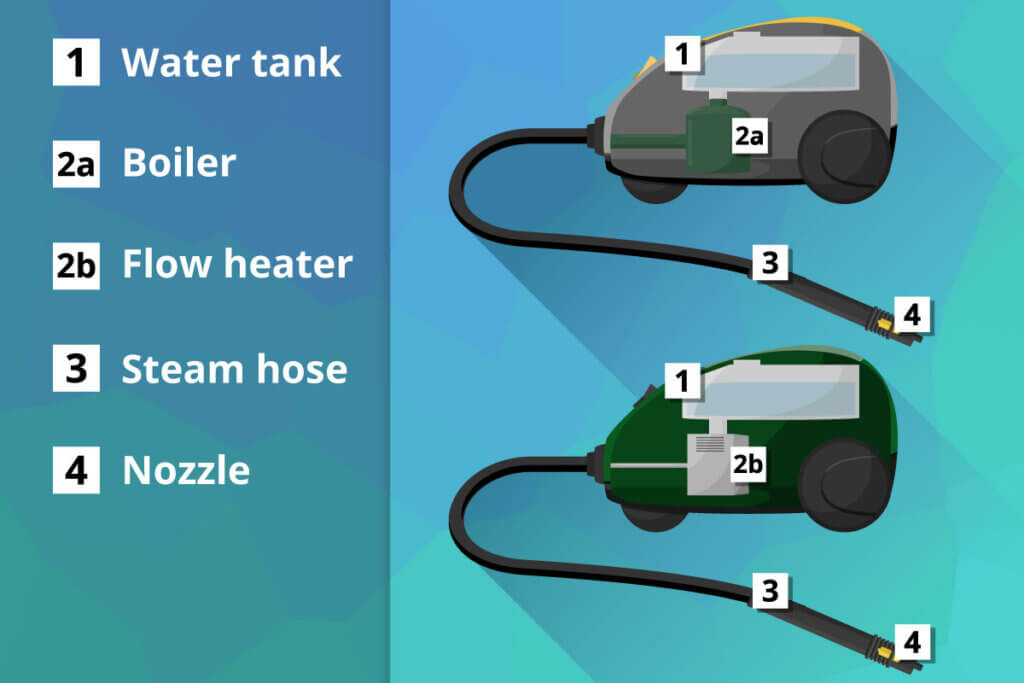
Steam pressure regulation (in steps or stepless)
This criterion is about whether you have a possibility to adjust the steam pressure via selector levers in steps or also steplessly, or whether there is a constant delivery of steam as long as the appliance is switched on and the pressure is sufficient.
Maximum steam temperature (degrees Celsius)
To achieve effective cleaning results, the unit should be able to build up a steam of at least 100 degrees Celsius. A distinction is made between three types of steam, which are generated in different temperature zones:
- Wet steam: about 150 degrees Celsius
- Dry steam: between 160 and 190 degrees Celsius
- Superheated steam: above 300 degrees Celsius
Not all manufacturers specify the steam temperatures of their appliances. Models for home use produce steam up to 150 degrees Celsius. Higher temperatures mean a higher risk of injury and are only reached by high-temperature models, which are mainly used in industry.
Heating time (minutes)
The heat-up time indicates how long users have to wait after switching on until sufficient pressure is built up and cleaning can start. Some steam ducks reach working pressure after only 35 seconds, because the water boiler is comparatively small and the amount of water is correspondingly smaller. Larger units need between four and six minutes for this, sometimes even longer.
Models with larger tanks usually need a higher wattage because more energy is needed to heat a larger amount of water in the same time. Otherwise, it would take a very long time for the appliance to be ready for use.
Water tank (size and type)
The size of the water tank also has a decisive influence on the area you can work on or how long you can steam clean without having to refill the tank. Small models have a tank volume of between 100 and 600 millilitres. Larger appliances with sleds, i.e. steam cleaners and steam vacuums, can hold up to six litres of water. In private households, however, tank volumes of about one litre are sufficient.
How much electricity is ultimately consumed depends on how effectively the heating coil converts electrical energy into heat. Experts speak of energy efficiency. You may have to use a watering can or measuring cup if the unit cannot be filled via the tap because of its size or weight.
Pressure vessel with two-chamber system
A two-chamber system allows you to refill water even during operation. If, on the other hand, your unit only has one water chamber, you must wait until the unit has cooled down before filling it. Users who often want to clean larger areas, such as their own patio, should pay attention to this feature when buying.
Flow heater
There are also some steam cleaner models that are equipped with a flow heater instead of a steam boiler. These devices do not heat the steam boiler and the water inside it, but gradually evaporate smaller amounts of water. The liquid flows through a small component, such as a heating plate, which immediately triggers the evaporation. This steam that has just been generated exits directly at the nozzle. The steam is thus generated as needed. In addition, the absence of a steam boiler allows for a more compact design. All in all, a long working time with low energy consumption is possible.
Power supply (cable or battery)
Floor-standing units have a cable length of about six metres. This allows for a large freedom of movement without having to move the cable to another socket. You can extend your range of movement with an extension cable or a multiple socket. However, make sure that the additional cable is suitable for the wattage of the steam cleaner.
Some models, especially handheld devices such as steam ducks, have a rechargeable battery. This extends your range of movement, gives you more flexibility and allows you to use the device in places where there is no power socket nearby, for example for fittings in the car or objects in the garden. With these cordless models, battery life is important. Once the stored energy is used up, you can only continue working after recharging.
The models have a charging station where the batteries are recharged. Some devices also need the wired power supply to build up the steam pressure. So you need to plug them in before use to build up the steam pressure, which is then maintained for use by battery power.
Safety
Since steam cleaners work with high pressures and high temperatures, the topic of safety is particularly important. Make sure that the appliance has a GS mark for tested safety and ideally also a TÜV seal.
Another important safety feature ensures that the steam boiler is prevented from opening until the pressure has been completely released. This can be implemented by an electronic lock that makes it impossible to open it before it has cooled down. There are also some models that have a mechanism that has to be pressed down very hard, for example. It must therefore be a deliberate process. Careless opening or opening of the flap by playing children is thus prevented.
A child safety lock prevents the playing offspring from switching on the appliances and exposing themselves to the risk of scalding. In addition, be sure to read the instructions carefully and before using the appliance for the first time in order to exclude potential application errors. For example, overhead use is not permitted with some appliances.
Helpful functions and features
In addition to the basic functions mentioned, there are other features that make some machines stand out from the crowd and make them suitable for special cleaning tasks. We present a selection.
Limescale filter
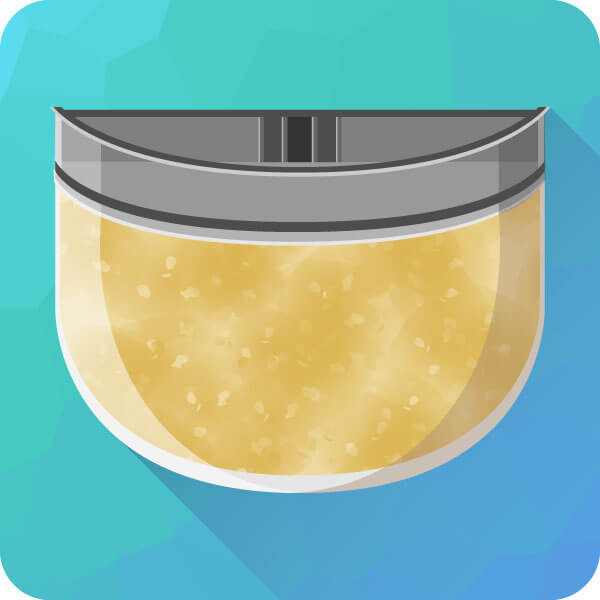
With a limescale filter or a descaling cartridge, you can increase the usage time of the steam cleaner. If you do not use such a filter or do not change it regularly, limescale will build up in the appliance. This is especially true if the water in your area is hard. You must then clean the tanks and supply lines and treat them with a descaling agent before continuing work. Many Kärcher models automatically indicate when you need to change the cartridge. It is therefore always worthwhile to stock up on a replacement filter.
Disinfectant tank
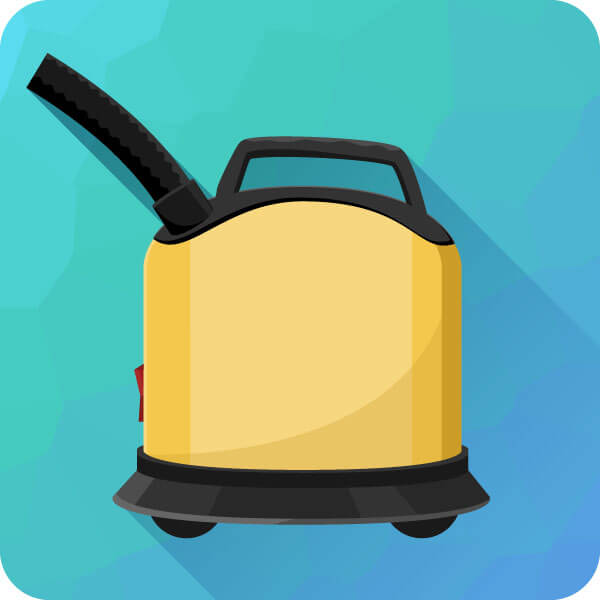
Users for whom the good cleaning function of ordinary steam cleaners is not yet sufficient can opt for a model with an additional disinfectant tank. Such models, which are sold by Dirt Devil, among others, are suitable for particularly thorough cleaning of bathrooms, showers and toilets.
Dry steam function

Dry steam is generally referred to when the steam temperature exceeds 170 degrees Celsius. It then contains virtually no more water droplets and therefore enables good, germ-free cleaning. Such steam is also suitable for cleaning textile surfaces such as sofas and carpets without an additional extraction function, as no mould moisture remains.
Hot water can be switched on
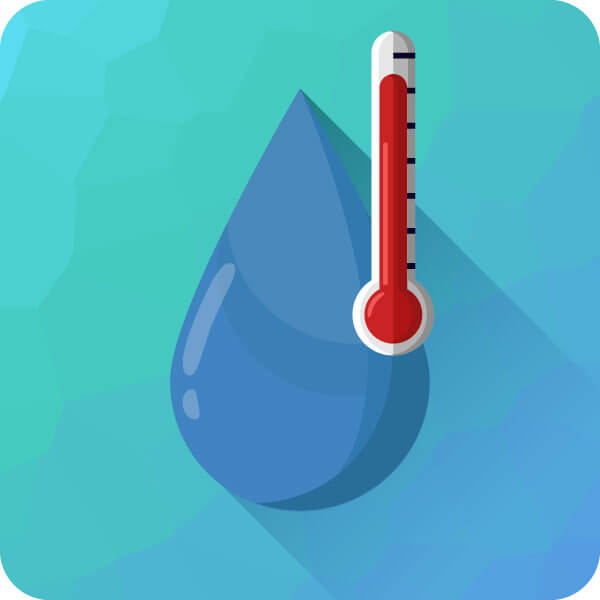
Kärcher offers an even simpler and very effective dirt cleaning with its VapoHydro function. In addition to steam, you can switch on hot water. Dirt is loosened even more easily in this way and simply rinsed away. This saves a work step, as you do not have to sweep or wipe away loosened dirt yourself.
Alternative distilled water
If you are considering whether it makes sense to operate a steam cleaner with distilled water, a note from the Kärcher company will help. It points out that the level detection does not work with distilled water in appliances with boilers. In addition, distilled water extracts minerals from the boiler, which is why it can be damaged. The manufacturer recommends using tap water or a mixture of tap and distilled water in equal parts. You should also change the limescale filter regularly.
Various adapter accessories
In order to purchase the most versatile appliance possible, you should make sure that accessories for different applications are included with the appliance or can be purchased separately. This way, your unit can be used universally and you make a worthwhile investment in the future. We list important accessories as well as special functions of the units.
Standard floor nozzle
This tube attachment is very similar in appearance to the floor nozzle of a hoover. Instead of sucking in dust, hot steam escapes here and loosens the dirt underneath the nozzle. Many models allow a fleece floor cloth to be attached underneath. This absorbs the loosened dirt when wiping over the surface to be cleaned. Some floor nozzles are also equipped with bristles that loosen the moistened dirt by scrubbing.
Steam vacuum nozzle
The floor nozzle of a steam vacuum combines the standard floor nozzle of a steam cleaner with the suction function of a hoover. Escaping steam loosens the dirt and, if necessary, can achieve even more efficient results by scrubbing. The dissolved dirt is then absorbed together with the moisture.
Floor steam nozzle
A floor steam nozzle is an additional adapter that is attached to the end of the pipe instead of the standard floor nozzle. It has the same diameter as the tube and is best suited for small indoor areas, but also for dusting indoor plants. Make sure to keep enough distance so that the steam does not harm your plants. However, for large-scale soiling, you won’t do much good with this tool, which is designed for selective purposes.
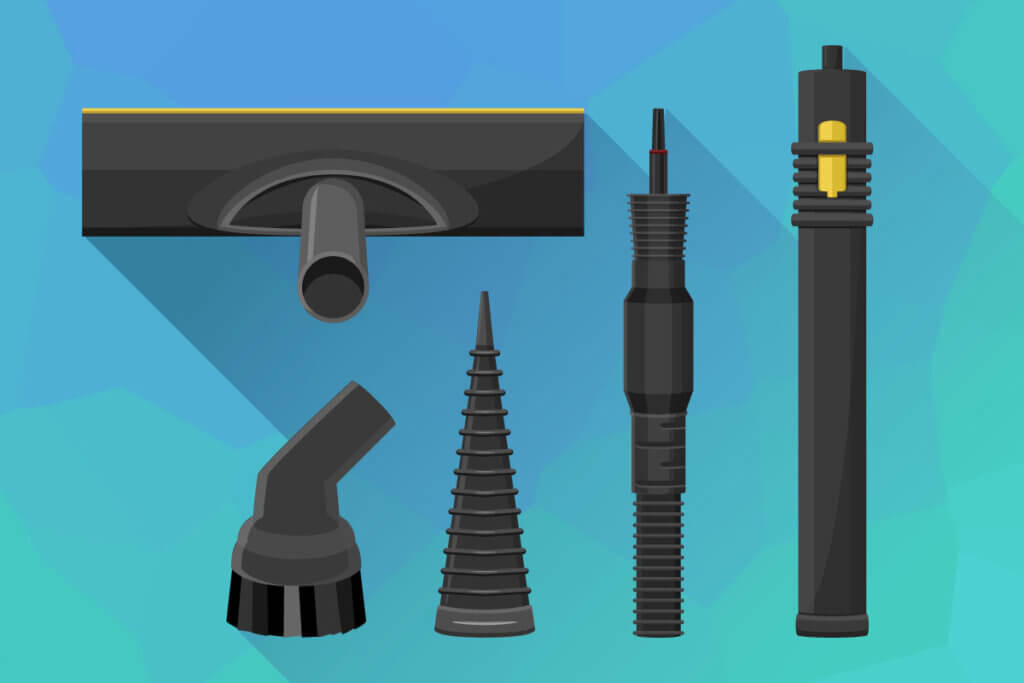
Round brush
The round brush is an attachment that is very similar to the floor steam nozzle, but also has bristles on the underside. It can be used to effectively remove verdigris and other stubborn dirt from natural stone surfaces and tiles on patios.
Spot blasting nozzle
The spot-jet nozzle is one of the strongest weapons of a steam cleaner. Using a very narrow nozzle, you can apply steam at high speed directly to the surface, allowing you to reach and effectively clean narrow and angled areas. An example of use is the home shower tray with its joints and hard-to-clean angles.
Carpet gliders
Some manufacturers such as Kärcher offer special carpet gliders for their floor nozzles. This allows you to freshen up these floor materials with the power of steam. Advantage besides dirt removal: During the treatment, the fibres straighten up and ensure a coherent and tidy overall appearance.
Iron function
In some cases, steam cleaners come with a separate iron that you can use without an additional electrical power supply. For users who do a lot of ironing, this brings enormous advantages, as there is no need to constantly refill the small water tank of a conventional iron.
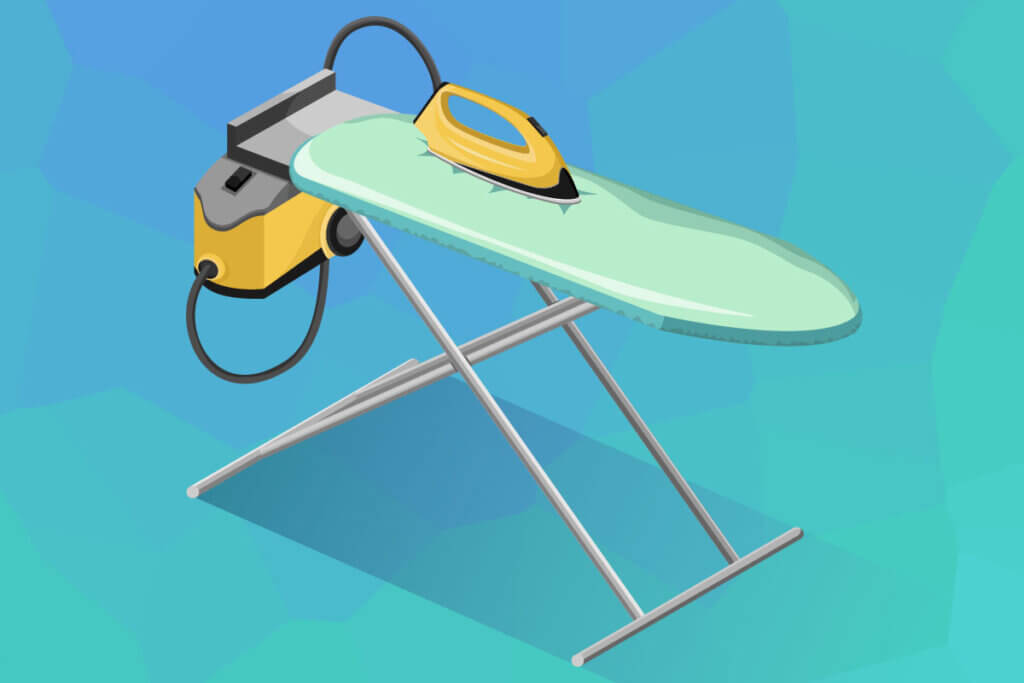
Cloth sets
Many manufacturers offer a range of different cloths, for example made of fleece, to be placed underneath the floor nozzles. In this way, the dirt is absorbed directly into the cloth. Thanks to sophisticated fastening methods, such as Velcro fasteners, some models can be attached easily and the cloth can be changed without coming into contact with dirt.
Steam cleaner manufacturers represented in the private user segment
Bestron | Bissell | Black & Decker | Bomann | Clean Maxx | Dirt Devil | Kärcher | Kärcher Easyfix | Leifheit | Nilfisk-Alto | Philipps | Rowenta | Severin | Vileda Steam

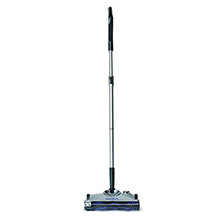
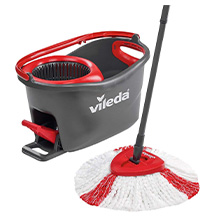
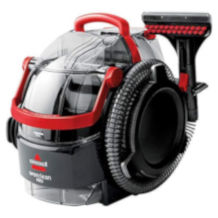
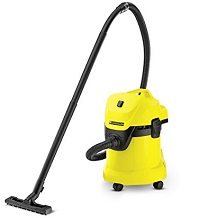
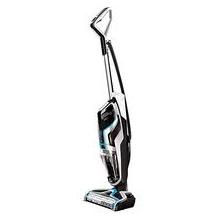
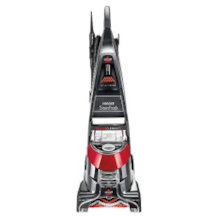
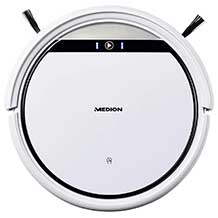
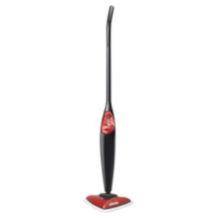
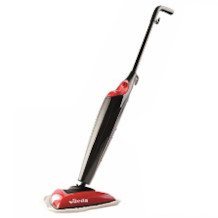


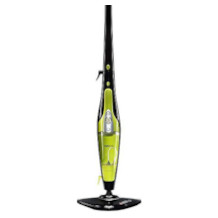
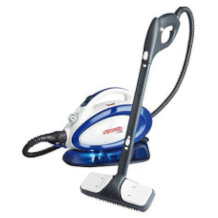


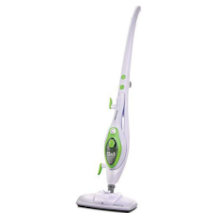






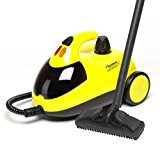
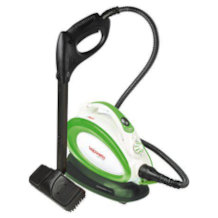


 5,078 reviews
5,078 reviews

